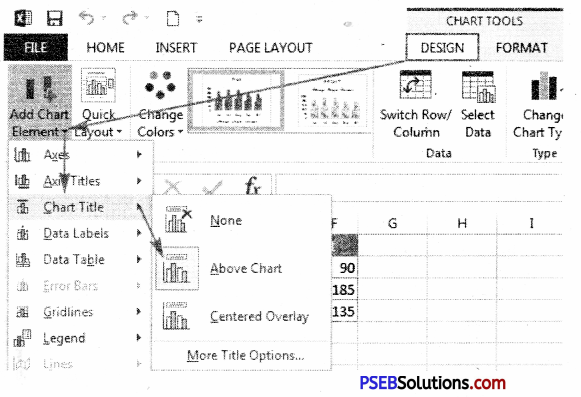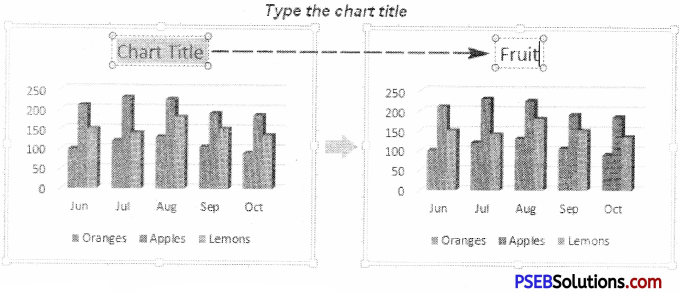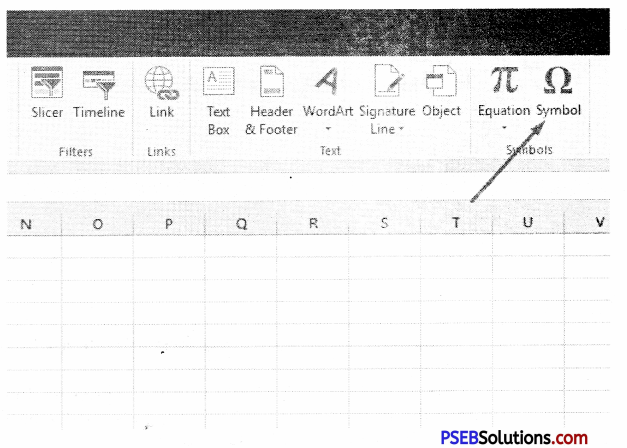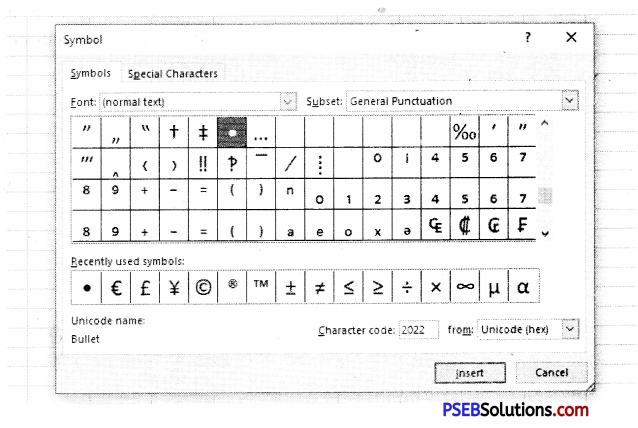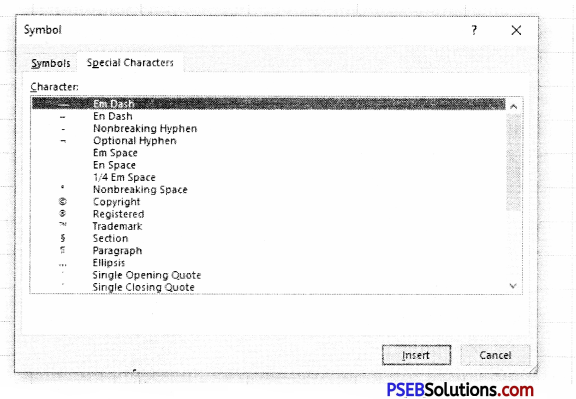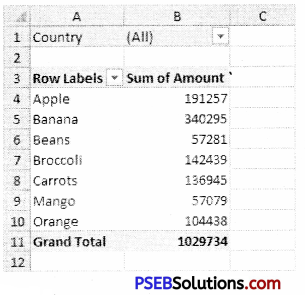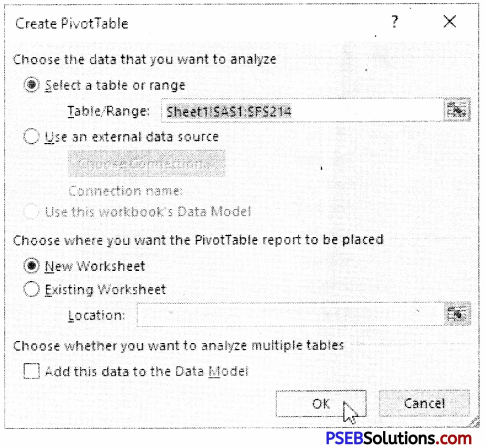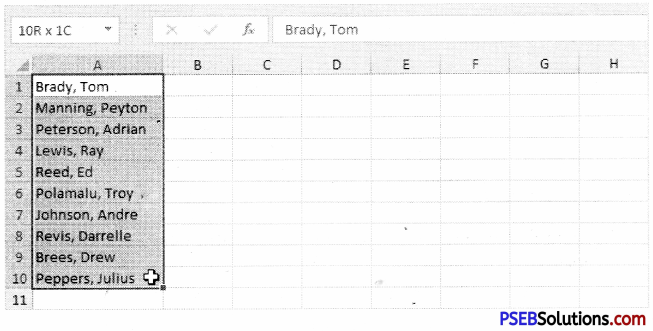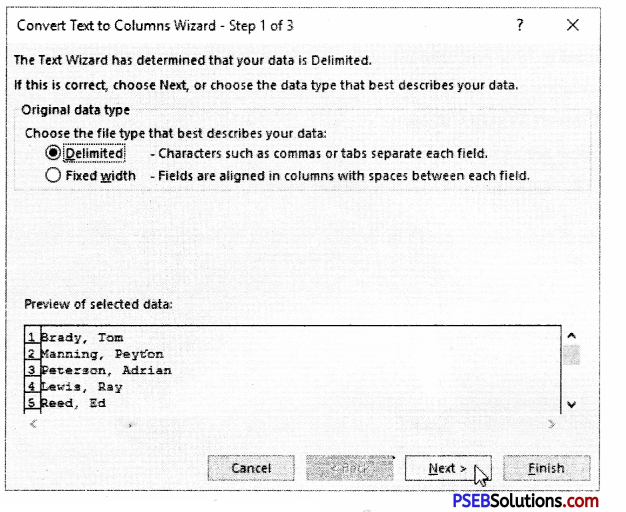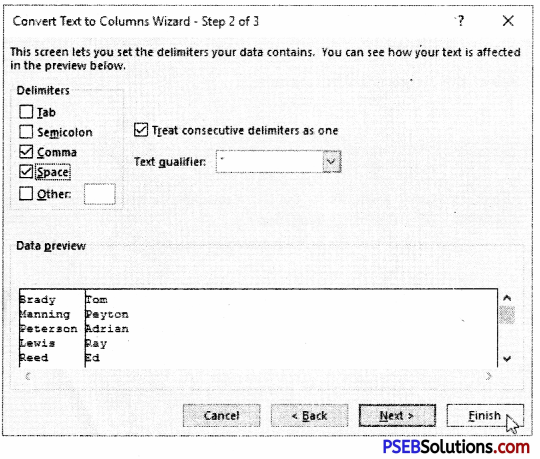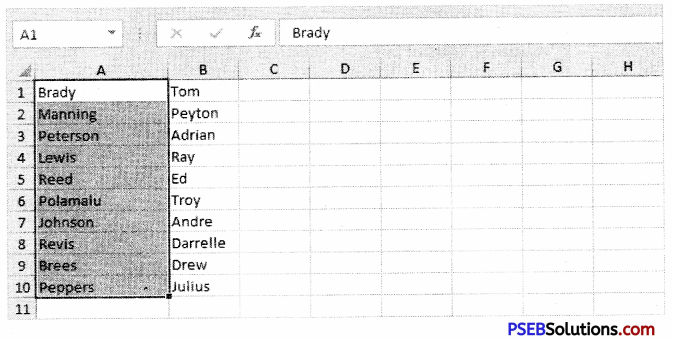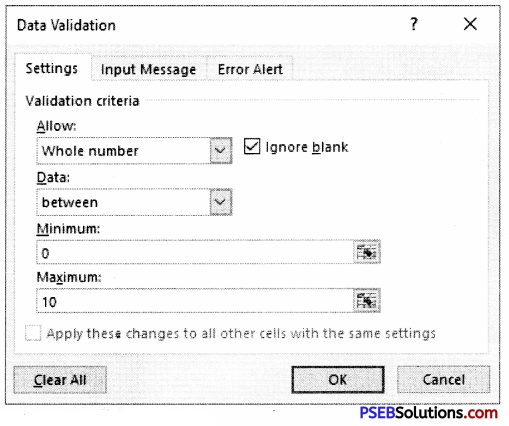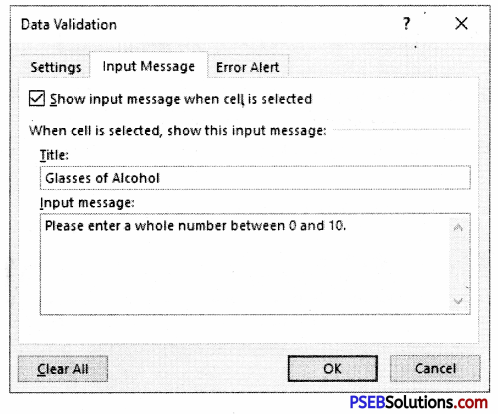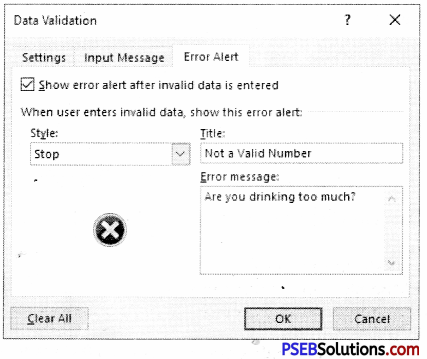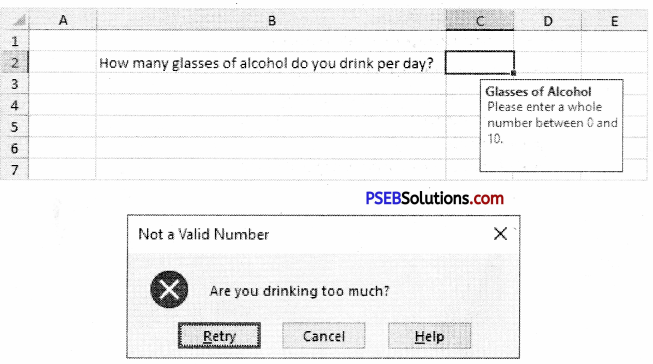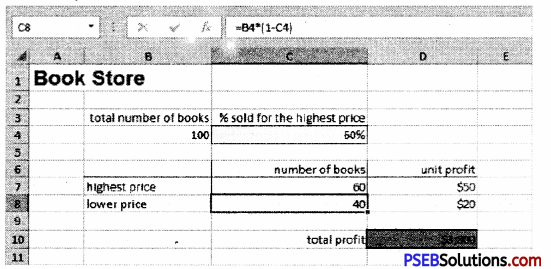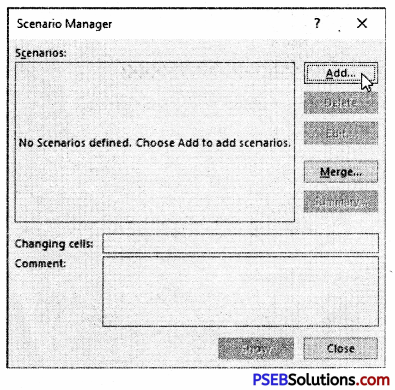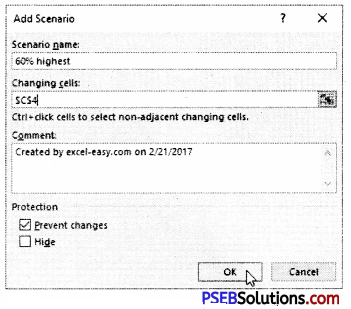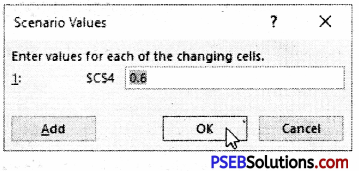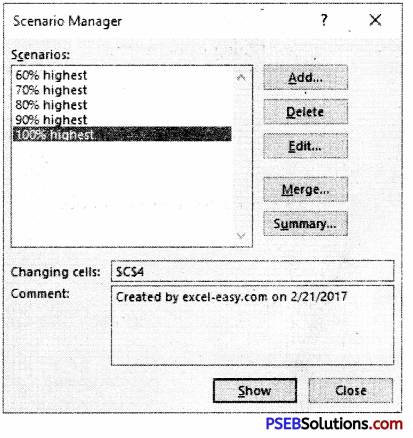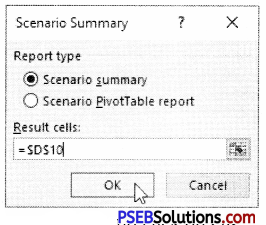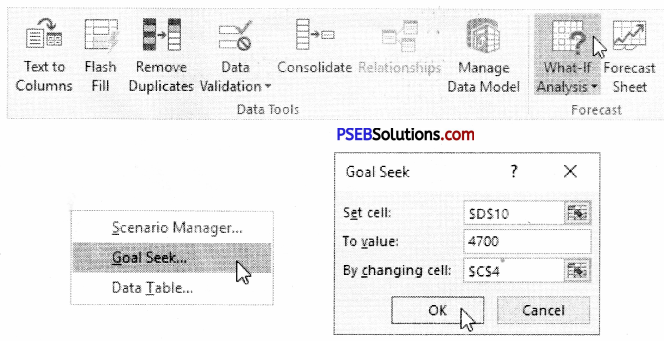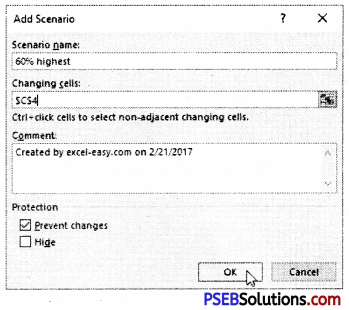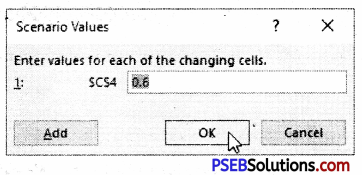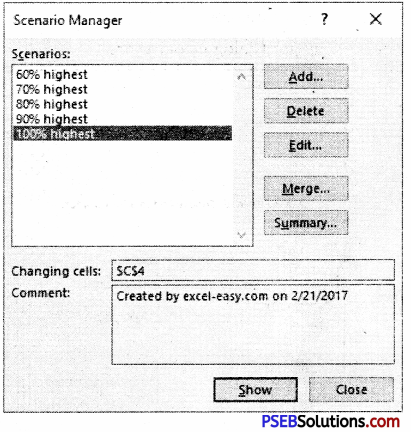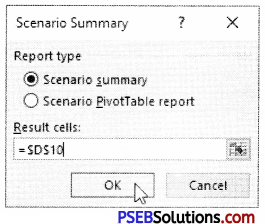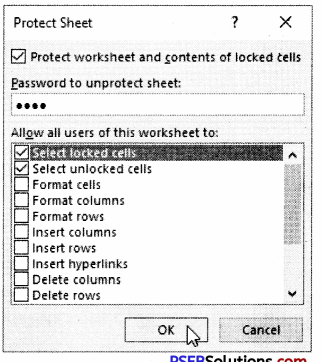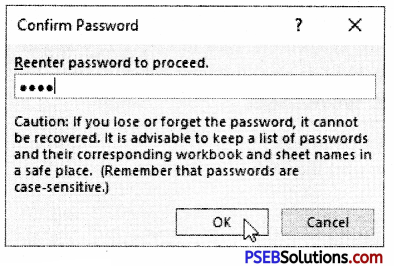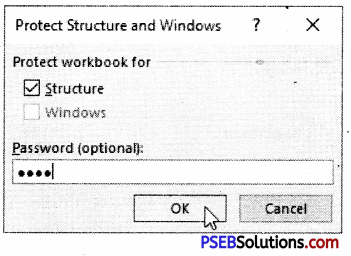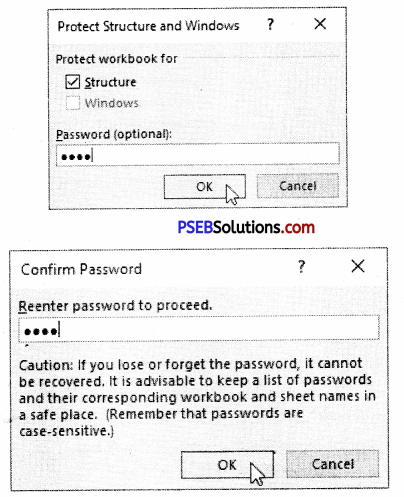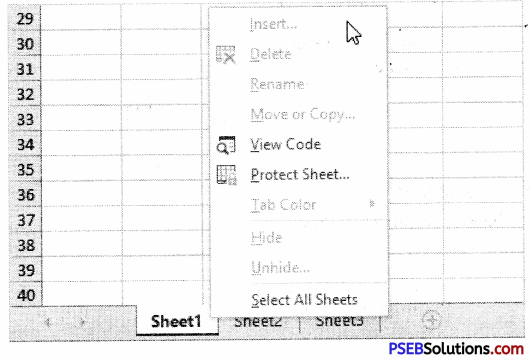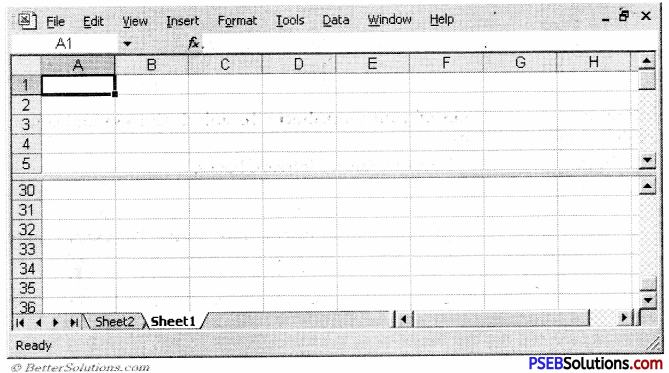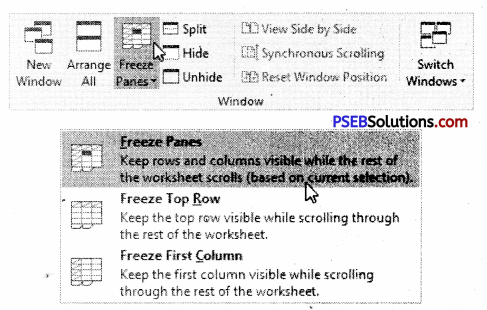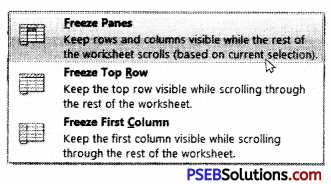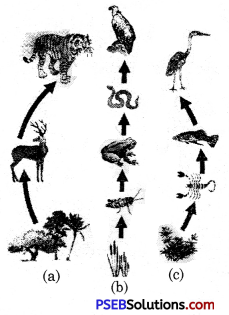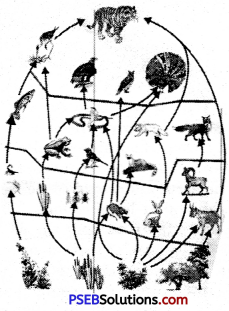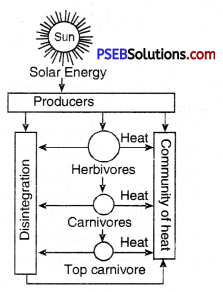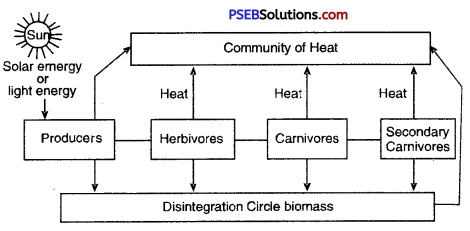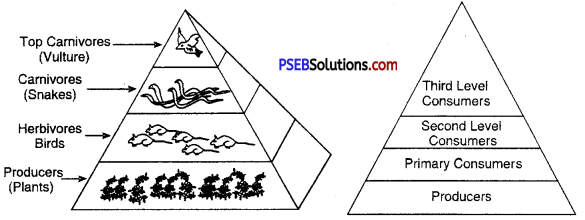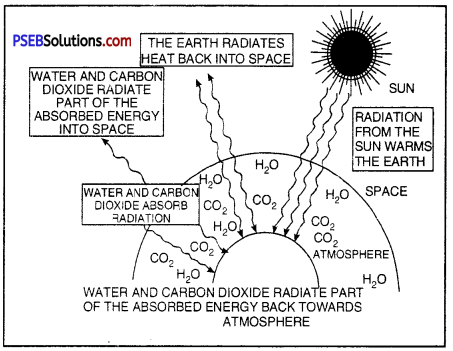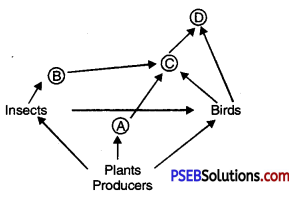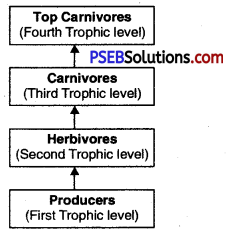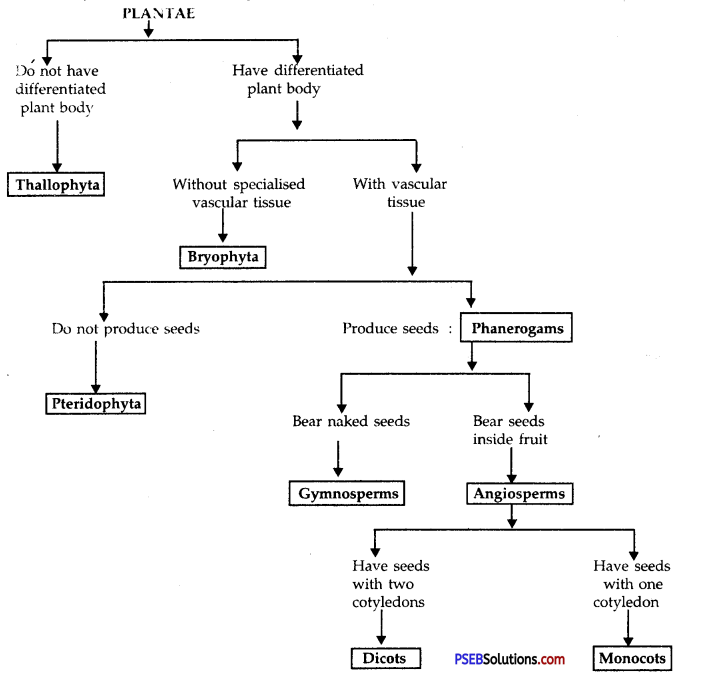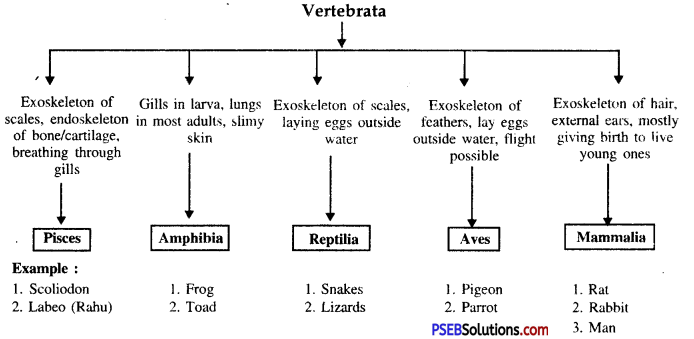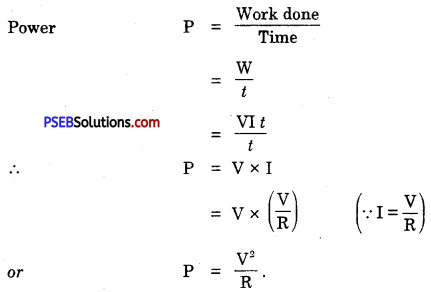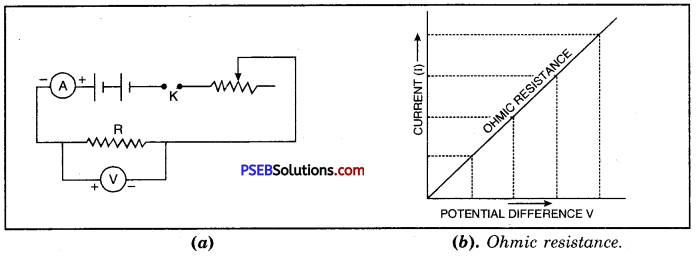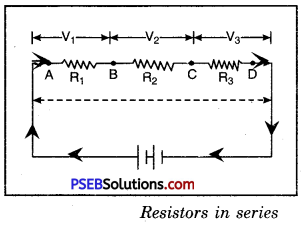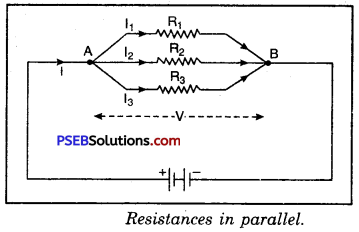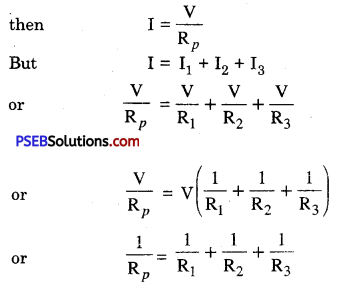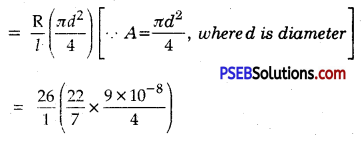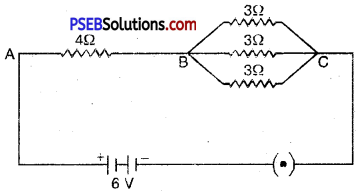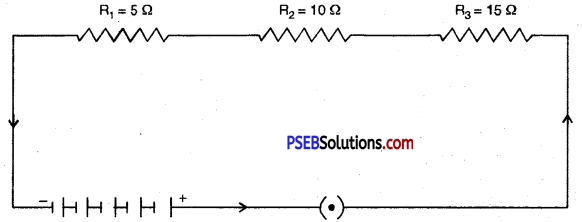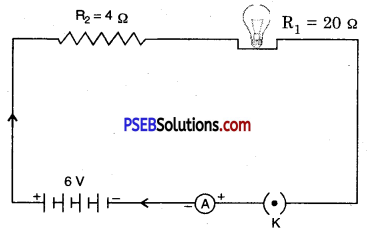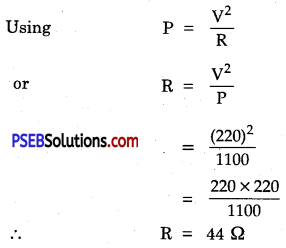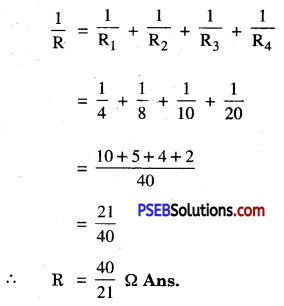Punjab State Board PSEB 10th Class Hindi Book Solutions Chapter 15 सदाचार का तावीज़ Textbook Exercise Questions and Answers.
PSEB Solutions for Class 10 Hindi Chapter 15 सदाचार का तावीज़
Hindi Guide for Class 10 PSEB सदाचार का तावीज़ Textbook Questions and Answers
(क) विषय-बोध
1. निम्नलिखित प्रश्नों के उत्तर एक या दो पंक्तियों में दीजिए
प्रश्न 1.
राजा ने राज्य में किस चीज़ के फैलने की बात दरबारियों से पूछी?
उत्तर:
राजा ने राज्य में भ्रष्टाचार फैलने की बात दरबारियों से पूछी।
प्रश्न 2.
राजा ने भ्रष्टाचार ढूँढ़ने का काम किसे सौंपा?
उत्तर:
राजा ने भ्रष्टाचार ढूँढ़ने का काम विशेषज्ञों को सौंपा।
![]()
प्रश्न 3.
एक दिन दरबारियों ने राजा के सामने किसे पेश किया?
उत्तर:
एक दिन दरबारियों ने राजा के सामने एक साधु को पेश किया।
प्रश्न 4.
साधु ने राजा को कौन-सी वस्तु दिखायी?
उत्तर:
साधु ने राजा को एक तावीज़ दिखाया।
प्रश्न 5.
साधु ने तावीज़ का प्रयोग किस पर किया?
उत्तर:
साधु ने तावीज़ का प्रयोग कुत्ते पर किया।
प्रश्न 6.
तावीज़ों को बनाने का ठेका किसे दिया गया?
उत्तर:
तावीज़ों को बनाने का ठेका साधु बाबा को दिया गया।
प्रश्न 7.
राजा वेश बदलकर पहली बार कार्यालय कब गए थे?
उत्तर:
राजा वेश बदलकर पहली बार दो तारीख को कार्यालय गए थे।
2. निम्नलिखित प्रश्नों के उत्तर तीन-चार पंक्तियों में दीजिए
प्रश्न 1.
दरबारियों ने भ्रष्टाचार न दिखने का क्या कारण बताया?
उत्तर:
एक दरबारी के अनुसार भ्रष्टाचार को वे इसलिए नहीं देख पाते क्योंकि वह बहुत बारीक होता है। उसकी आँखें महाराज की विराटता को देखने की इतनी अधिक अभ्यस्त हो गई हैं कि उन्हें कोई बारीक चीज़ दिखाई नहीं देती। उनकी आँखों में तो सदा महाराज की सूरत बसी रहती है। ऐसी स्थिति में किसी और वस्तु को देख पाना कैसे संभव है।
प्रश्न 2.
राजा ने भ्रष्टाचार की तुलना ईश्वर से क्यों की?
उत्तर:
राजा ने भ्रष्टाचार की तुलना ईश्वर से इसलिए की क्योंकि उसने विशेषज्ञों की जाँच-पड़ताल से पाया कि भ्रष्टाचार अति सूक्ष्म है। वह अगोचर है। भ्रष्टाचार सर्वव्यापी है और ये सभी गुण एवं विशेषताएँ तो ईश्वर में होती हैं। इन्हीं गुणों एवं विशेषताओं के कारण राजा ने भ्रष्टाचार की तुलना ईश्वर से की।
प्रश्न 3.
राजा का स्वास्थ्य क्यों बिगड़ता जा रहा था?
उत्तर:
राजा के राज्य में खूब हल्ला मचा हुआ था कि यहाँ भ्रष्टाचार बहुत फैल रहा है। राजा को कहीं भी भ्रष्टाचार नहीं दिखाई दे रहा था। उसने अपने दरबारियों से पूछा कि अगर उन्होंने भ्रष्टाचार को कहीं देखा हो तो उसे लाकर राजा को दिखाओ, परन्तु दरबारियों को भी भ्रष्टाचार दिखाई नहीं दिया था। उनका मानना था कि जब महाराज को नहीं दिखा तो वे कैसे देख सकते हैं? अतः दरबारियों और विशेषज्ञों की रिपोर्ट का पुलिंदा देखकर राजा का स्वास्थ्य निरंतर बिगडता जा रहा था।
प्रश्न 4.
साधु ने सदाचार और भ्रष्टाचार के बारे में क्या कहा ?
उत्तर:
साधु ने कहा कि भ्रष्टाचार और सदाचार दोनों ही व्यक्ति की अपनी आत्मा में होते हैं। यह बाहर से आने वाली वस्तु नहीं है। मनुष्य को जब ईश्वर बनाता है तब वह किसी की आत्मा में ईमान की कल को फिट कर देता है और किसी की आत्मा में बेईमानी की कल को फिट कर देता है। इस कल में से ईमान या बेईमानी के स्वर ध्वनि के रूप में निरंतर निकलते रहते हैं। इन स्वर ध्वनियों को ही ‘आत्मा की पुकार’ कहा जाता है। प्रत्येक व्यक्ति आत्मा की पुकार के अनुसार ही अपना कार्य करता है। किन्तु जिन व्यक्तियों की आत्मा से निरंतर बेईमानी के स्वर निकलते रहते हैं, उन्हें किस प्रकार से दबाया जाए। उनके बेईमानी के स्वर को ईमान के स्वर में कैसे परिवर्तित किया जाए। कई वर्षों तक निरन्तर चिंतन करने के बाद अब मैंने एक ऐसे तावीज़ का निर्माण किया है जो व्यक्ति को सदाचारी बनाता है। यह तावीज़ जिस व्यक्ति की भुजा पर बँधा होगा वह सदाचारी बन जाएगा।
![]()
प्रश्न 5.
साध को तावीज़ बनाने के लिए कितनी पेशगी दी गई?
उत्तर:
राज्य में फैले भ्रष्टाचार को समाप्त करने के लिए एक मन्त्री के सुझाव पर राजा ने साधु को तावीज़ बनाने का ठेका दे दिया। तावीज़ बनाने के लिए साधु को पाँच करोड़ रुपए पेशगी के तौर पर दिए गए। देखते ही देखते लाखों तावीज़ बनकर तैयार हो गए उन्हें राज्य के हर कर्मचारी की भुजा पर बाँध दिया गया।
प्रश्न 6.
तावीज़ किस लिए बनवाए गए थे?
उत्तर:
भ्रष्टाचार को मिटाकर व्यवस्था में परिवर्तन लाने के लिए राजा ने तावीज़ बनवाए थे। अपने दरबारियों के कहने से राजा ‘सदाचारी तावीज़’ वाले साधु से तावीजें बनवाकर अपने कर्मचारियों की भुजाओं पर बंधवाता है, जिससे वे सदाचारी बन जाएं क्योंकि साधु ने उसे बताया था कि जिस आदमी की भुजा पर यह बंधा होगा, वह सदाचारी हो जाएगा। उसने कुत्ते पर भी इसका प्रयोग किया था। यह तावीज़ गले में बांध देने से कुत्ता भी रोटी नहीं चुराता।
प्रश्न 7.
महीने के आखिरी दिन तावीज़ में से कौन-से स्वर निकल रहे थे?
उत्तर:
महीने के आखिरी दिन जब राजा वेश बदलकर तावीज़ का प्रभाव देखने के लिए एक कर्मचारी के पास काम करवाने गया और उसे पाँच का नोट दिखाया, जो उसने ले लिया। राजा ने उस कर्मचारी को उसी समय वहीं पकड़ लिया और पूछा कि क्या उसने तावीज़ नहीं बाँधा है? उसने तावीज़ बाँधी हुई थी। जब राजा ने तावीज़ पर कान लगाकर सुना तो तावीज़ में से आवाज़ आ रही थी कि ‘आज इकतीस है, आज तो ले ले!’
3. निम्नलिखित प्रश्नों के उत्तर छह या सात पंक्तियों में दीजिए
प्रश्न 1.
विशेषज्ञों ने भ्रष्टाचार खत्म करने के क्या-क्या उपाय बताए?
उत्तर:
भ्रष्टाचार को दूर करने के लिए विशेषज्ञों ने व्यवस्था परिवर्तन करने पर बल दिया। ऐसी नीतियां एवं कानून लाए जाएँ, जिनसे भ्रष्टाचार के अवसर पूर्णत: समाप्त किये जा सकें। जब तक समाज में ठेकेदारी प्रथा विद्यमान है, तब तक ठेकेदारों का अस्तित्व रहेगा और यह लोग अपना काम निकलवाने हेतु किसी न किसी अधिकारी को घूस खिलाते रहेंगे। अधिकारियों की घूस बंद होने के स्थान पर निरन्तर बढ़ती रहेगी। यदि ठेकेदारी प्रथा को समाप्त कर दिया जाए तो समाज से घूसखोरी समाप्त की जा सकती है। हमें उन सभी कारणों की जाँच-पड़ताल करनी होगी जिनके कारण भ्रष्टाचार उत्पन्न होता है तथा व्यक्ति या तो घूस लेता है या फिर किसी को घूस देता है।
प्रश्न 2.
साधु ने तावीज़ के क्या गुण बताए?
उत्तर:
साधु ने तावीज़ के गुणों को बताते हुए कहा कि यह तावीज़ जिस किसी की भुजा पर बँधा होगा उसमें बेईमानी नहीं आ सकती। वह गलत रास्ते पर नहीं चलेगा। भुजा पर बँधा तावीज़ उसे ईमानदारी के रास्ते पर चलने को बाध्य करता रहेगा। उसके मन से लालच, वैरभाव आदि सब कुछ दूर हो जाएगा। वह चाहकर भ्रष्टाचार के चंगुल में नहीं फँस पाएगा। उसका आचरण एकदम शुद्ध तथा आत्मा एकदम पवित्र हो जाएगी।
प्रश्न 3.
‘सदाचार का तावीज़’ पाठ में छिपे व्यंग्य को स्पष्ट कीजिए।
उत्तर:
‘सदाचार का तावीज़’ पाठ मूल रूप से एक व्यंग्यात्मक रचना है। इस रचना के माध्यम से व्यंग्यकार लेखक हरिशंकर परसाई कहना चाहते हैं कि केवल भाषणों, कार्यकलापों, पुलसिया कार्यवाही, नैतिक स्लोगनों, वाद-विवाद आदि के ज़ोर से कभी भी भ्रष्टाचार को जड़ से समाप्त नहीं किया जा सकता। भ्रष्टाचार को समाप्त करने के लिए समाज में व्यक्ति को नैतिक स्तर दृढ़ करना होगा। जब व्यक्ति की नैतिकता में विकास होगा तभी व्यक्ति समाज और राष्ट्र का कल्याण कर सकेगा। देश में कार्यरत सभी कर्मचारियों को जब उनकी आवश्यकतानुसार पर्याप्त वेतन दिया जाएगा तब कहीं जाकर भ्रष्टाचार की नकेल कसी जा सकती है। भ्रष्टाचार पर लगाम लगाना किसी एक व्यक्ति का काम नहीं बल्कि इसकी जिम्मेदारी पूरे समाज की है, जिसे पूरी ईमानदारी से हमें निभाना चाहिए।
(ख) भाषा-बोध
1. निम्नलिखित शब्दों के विपरीत शब्द लिखिए
एक – ————
पाप – ———–
गुण – ————
विस्तार – ————
सूक्ष्म – ————-
ईमानदारी – ————–
उत्तर:
शब्द – विपरीत शब्द
एक – अनेक।
पाप – पुण्य।
गुण – अवगुण।
विस्तार – संकुचन।
सूक्ष्म – स्थूल।
ईमानदारी – बेइमानी।
2. निम्नलिखित शब्दों के दो-दो पर्यायवाची शब्द लिखिए
राजा – ————
कान – ————-
मनुष्य – ———–
दिन – ————-
सदाचार – ————
भ्रष्टाचार – ————
उत्तर:
शब्द – पर्यायवाची शब्द
राजा – नरेश, सम्राट्।
मनुष्य – नर, आदमी।
सदाचार – अच्छा आचरण, पवित्र।
कान – कर्ण, श्रवण।
दिन – दिवस, वार।
भ्रष्टाचार – बुरा आचरण, दुराचार।
![]()
3. निम्नलिखित वाक्यांशों के लिए एक शब्द लिखिए
‘अच्छे आचरण वाला – —————
बुरे आचरण वाला – —————-
जो किसी विषय का ज्ञाता हो – ————–
हर तरफ फैला हुआ – —————-
जो दिखाई न दे – ————-
जिसकी आत्मा महान् हो – ————–
उत्तर:
वाक्यांश एक – शब्द
‘अच्छे आचरण वाला – सदाचारी
बुरे आचरण वाला – दुराचारी
जो किसी विषय का ज्ञाता हो – विशेषज्ञ
हर तरफ फैला हुआ – सर्वव्यापक, सर्वव्यापी
जो दिखाई न दे – अदृश्य
जिसकी आत्मा महान् हो – महात्मा।
(ग) रचनात्मक अभिव्यक्ति
प्रश्न 1.
साधु के स्थान पर आप राजा को भ्रष्टाचार समाप्त करने का कौन-सा उपाय बताते?
उत्तर:
साधु के स्थान पर मैं राजा को भ्रष्टाचार समाप्त करने के निम्नलिखित उपाय बताता-
- ठेकेदारी प्रथा समाप्त की जाए।
- आम जनता तथा अधिकारियों के बीच दलालों को समाप्त किया जाए।
- रिश्वत लेने और देने वालों को सजा का प्रावधान हो।
- सरकारी तंत्र में व्याप्त घूसखोरी समाप्त की जाए।
- जमाखोरी और कालाबाजारी पर अंकुश लगाया जाए।
- मिलावट और नकली माल के उत्पादन पर रोक लगाई जाए।
- टैक्स की चोरी करने वालों पर सख्त कारवाई हो।
प्रश्न 2.
विद्यार्थी के रूप में भ्रष्टाचार को खत्म करने के लिए आप कौन-कौन से कदम उठाएँगे?
उत्तर:
भ्रष्टाचार का अंत करने के लिए नैतिकता पर बल देना होगा। नैतिक क्रांति लानी होगी। चरित्र-निर्माण में बाधक तत्व-धन, लोभ और स्वार्थ को उखाड़ना होगा। राष्ट्र हित को सामने रखना होगा। शिक्षा-पद्धति में धार्मिक और नैतिक शिक्षा पर बल देना होगा। यह नैतिक क्रांति जनता को पहले अपने जीवन में लानी होगी। यही नैतिकता उसे निर्भीक और साहसी बनाएगी। उसके आगे रिश्वतखोर और भ्रष्ट अधिकारियों को घुटने टेकने पड़ेंगे। भ्रष्टाचार का एक सूक्ष्म कारण है हमारी सामाजिक अर्थव्यवस्था। हमारी आर्थिक नीतियाँ भ्रष्टाचार को बढ़ावा देती हैं। पूँजीवादी अर्थव्यवस्था में भ्रष्टाचार का अंत नहीं हो सकता, क्योंकि पूँजीवाद अर्थव्यवस्था धन की लिप्सा को अधिक बढ़ाती जाती है। पर जब तक अर्थव्यवस्था नहीं बदलती जनता को पग उठाना पड़ेगा, तभी भ्रष्टाचार समाप्त होगा।
प्रश्न 3.
भ्रष्टाचार या रिश्वत से सम्बन्धित आप अपना या अपने माता-पिता का कोई अनुभव लिखिए।
उत्तर:
एक बार मैं अपने माता-पिता के साथ रेल से पटना जा रहा था। हमने ए०सी० थर्ड में टिकट बुक करवाई थी। हमने दिल्ली स्टेशन से अपने आरक्षण कोच में प्रवेश किया। जल्दी ही हम अपनी सीट पर जा बैठे। हमारे साथ वाली सीट पर एक परिवार और था। उनके पास चार टिकट थी किंतु वे पाँच लोग थे। कुछ देर बाद टी०टी० आया उसने उनसे टिकट दिखाने को कहा तो उन्होंने टिकट दिखा दी। तब टी०टी० ने एक टिकट दूसरे दर्जे की होने पर उसे जुर्माने की बात कही। वे लोग जुर्माना भरना चाहते थे। किंतु टी०टी० ने उनसे कहा यदि वे उसे 500 रु० दे दें तो वह जुर्माने की रसीद नहीं काटेगा। यह एक भ्रष्टाचार का जीता जागता नमूना था। जो मैंने अपनी आँखों से देखा था।
(घ) पाठ्येतर सक्रियता
प्रश्न 1.
भ्रष्टाचार के विरुद्ध स्लोगन लिखकर स्कूल में निश्चित स्थान पर लगाइए।
उत्तर:
1. देश को जगाना होगा,
भ्रष्टाचार को भगाना होगा।
2. देश का यदि चाहते हो विकास,
भ्रष्टाचार को न आने दो आस-पास।
3. गली-गली में शोर है,
भ्रष्टाचार का ज़ोर है।
4. अबकी बार यहीं पुकार,
जड़ से मिटाओ भ्रष्टाचार।
प्रश्न 2.
‘भ्रष्टाचार और उसका समाधान’ विषय पर कक्षा में परिचर्चा कीजिए।
उत्तर:
विद्यार्थी अध्यापक की सहायता से कक्षा में स्वयं करें।
प्रश्न 3.
ईमानदारी से सम्बन्धित कहानियाँ पढ़िए।
उत्तर:
विद्यार्थी पुस्तकालय में जाकर ईमानदारी से संबंधित कहानियाँ खोजकर पढ़ें।
प्रश्न 4.
इस निबंध में आए संवादों के आधार पर किसी एक प्रसंग को लघु नाटिका में रूपांतरित करके उसे स्कूल/कक्षा में मंचित कीजिए।
उत्तर:
अध्यापक की सहायता से विद्यार्थी स्वयं करें।
प्रश्न 5.
समय-समय पर विभिन्न पत्रिकाओं/समाचार-पत्रों आदि में ‘भ्रष्टाचार उन्मूलन’ संबंधी विषय पर कविता, निबंध, स्लोगन राइटिंग (नारे लेखन) आदि प्रतियोगिताओं में भाग लीजिए।
उत्तर:
विद्यार्थी अध्यापक की सहायता से विद्यालय में होने वाली प्रतियोगिताओं में भाग लें।
प्रश्न 6.
स्कूल अथवा अपने इलाके में चल रहे लीगल लिटरेसी क्लब के सक्रिय सदस्य बनें तथा अपने आस-पास हो रहे भ्रष्टाचार उन्मूलन में सहयोग करें।
उत्तर:
विद्यार्थी अपने विवेक के आधार पर किसी सामाजिक संस्था का सदस्य बनकर देश हित में कार्य करें।
(ङ) ज्ञान-विस्तार
I. हरिशंकर परसाई- परसाई जी हिंदी-साहित्य के श्रेष्ठ व्यंग्यकार हैं। इन्होंने व्यंग्य को साहित्य में महत्त्वपूर्ण स्थान दिलवाया है। इन्होंने व्यंग्य को अपने लेखन से देश की विभिन्न समस्याओं के साथ जोड़ कर प्रस्तुत करने में अद्भुत सफलता प्राप्त की है। इन्होंने हास्य-व्यंग्य लिखने के साथ-साथ लंबे समय तक स्कूल-कॉलेजों में शिक्षण का कार्य भी किया है। बाद में इन्होंने साहित्य-लेखन के लिए अपनी शिक्षक की नौकरी त्याग दी थी। इनका व्यंग्य केवल हंसी-मज़ाक और मनोरंजन की वस्तु नहीं है बल्कि उन्होंने इसके माध्यम से समाज की अनेक समस्याओं को उजागर किया है। भ्रष्टाचार, शोषण, राजनीति, समाज आदि पर गहरा व्यंग्य करने के कारण ही इन्हें हिंदी-साहित्य में अनूठा स्थान प्राप्त हुआ है।
II. सदाचार-सदाचार (सत् + आचार) मानव के अच्छे आचरण से संबंधित शब्द है। यह शब्द सुशीलता, अच्छा चाल-चलन, अच्छे व्यवहार, नेक नियती, शुद्ध आचरण, नेकचलनी, शीलाचार आदि को व्यक्त करता है। सदाचार के मार्ग पर चलकर ही इन्सान विश्व भर में नाम कमा सकता है। स्वामी विवेकानन्द, पूर्व प्रधानमंत्री श्री लाल बहादुर शास्त्री, मदर टेरेसा आदि सभी सदाचारी थे और हमें उनके जीवन से शिक्षा प्राप्त करनी चाहिए। हम सबको सदाचार के मार्ग पर चलने की प्रेरणा महापुरुषों से लेनी चाहिए। ऐसा करके ही हम अपने परिवार, समाज और देश का नाम ऊँचा कर सकेंगे।
![]()
III. भ्रष्टाचार-यह शब्द भ्रष्ट + आचार दो शब्दों से मिलकर बना है। पापाचार, दुष्ट व्यवहार, अनाचार, पतित व्यवहार, कदाचित बदनीयती, नीच आचार आदि शब्द भ्रष्टाचार को ही व्यक्त करते हैं। मानव जीवन के जो कार्य अनैतिक और अनुचित होते हैं, उन्हें ही भ्रष्टाचार कहते हैं। अपना लाभ और स्वार्थ को पूरा करने के लिए किए जाने वाले सभी प्रकार के अनैतिक कार्य भ्रष्टाचार ही होते हैं। रिश्वतखोरी, काला बाज़ारी, कमीशन खोरी, तस्करी आदि सब भ्रष्टाचार के ही रूप हैं। हमें भ्रष्टाचार से दूर रहकर इसे समाज से मिटाने का प्रयत्न करना चाहिए।
PSEB 10th Class Hindi Guide सदाचार का तावीज़ Important Questions and Answers
प्रश्न 1.
राजा ने दरबारियों को किसे लाने को कहा?
उत्तर:
राजा ने दरबारियों से कहा कि जब कहीं भी कभी उन्हें भ्रष्टाचार दिखाई दे तो उसका नमूना अवश्य लाएँ ताकि भ्रष्टाचार के बारे में पता चले कि वह कैसा होता है।
प्रश्न 2.
राजा खुश क्यों हो रहा था?
उत्तर:
राजा को पहली बार पता चला था कि उसके राज्य में चमत्कारी साधु है इसलिए वह खुश हो रहा था।
प्रश्न 3.
दरबारियों ने भ्रष्टाचार के बारे में क्या बताया?
उत्तर:
दरबारियों ने भ्रष्टाचार के बारे में बताया कि भ्रष्टाचार स्थूल नहीं सूक्ष्म है। वह सब जगह है लेकिन दिखाई नहीं देता।
प्रश्न 4.
राजा को कितने तावीज़ों की आवश्यकता जान पड़ रही थी?
उत्तर:
राजा राज्य के प्रत्येक नागरिक के हाथ पर ताबीज़ बाँधने के लिए करोड़ों तावीज़ों की आवश्यकता थी।
प्रश्न 5.
कर्मचारी ने माह की आखिरी तारीख को रिश्वत क्यों ली होगी?
उत्तर:
कर्मचारी ने माह की आखिरी तारीख को रिश्वत इसलिए ली होगी क्योंकि उसे जो वेतन मिलता होगा वह उसे पर्याप्त नहीं होता होगा और वह पूरा महीना नहीं चल पाता होगा।
प्रश्न 6.
लेखक ने व्यंग्य द्वारा ‘सदाचार का तावीज़’ पाठ में क्या कहना चाहा है?
उत्तर:
लेखक ने व्यंग्य द्वारा ‘सदाचार का तावीज़’ पाठ में कहा है कि केवल भाषणों, नैतिक स्लोगनों, तावीज़ों तथा डंडे के ज़ोर पर भ्रष्टाचार को नहीं मिटाया जा सकता।
प्रश्न 7.
लेखक के अनुसार भ्रष्टाचार को कैसे मिटाया जा सकता है?
उत्तर:
लेखक के अनुसार नैतिक मूल्यों की स्थापना करके तथा कर्मचारियों को पर्याप्त वेतन देकर भ्रष्टाचार को मिटाया जा सकता है।
प्रश्न 8.
राजा का व्यक्तित्व कैसा था?
उत्तर:
राजा केवल अपने बारे में सोचता था। उसे चापलूसी पसंद थी। चापलूस लोग ही उसके मंत्री थे।
प्रश्न 9.
विशेषज्ञों ने सिंहासन में हुए भ्रष्टाचार के विषय में क्या बताया?
उत्तर:
विशेषज्ञों ने बताया कि सिंहासन की रंगाई का जो बिल दिया गया वह लागत से दुगुना था। उसमें आधे पैसे राजा के अफसर खा गए थे।
प्रश्न 10.
विशेषज्ञों ने राजा को भ्रष्टाचार के सम्बन्ध में क्या बताया?
उत्तर:
विशेषज्ञों के अनुसार भ्रष्टाचार को हाथ पकड़कर नहीं लाया जा सकता। वह सूक्ष्म, अगोचर और सर्वत्र व्याप्त है। उसे देखा नहीं, अनुभव किया जा सकता है। अब भ्रष्टाचार ईश्वर हो गया है। भ्रष्टाचार मुख्यतः घूस के रूप में रहता है।
प्रश्न 11.
विशेषज्ञों ने भ्रष्टाचार दूर करने के लिए क्या सुझाव दिया ?
उत्तर:
विशेषज्ञों ने भ्रष्टाचार उन्मूलन के लिए महाराज को व्यवस्था में परिवर्तन करने के लिए कहा। वे ठेका प्रथा समाप्त करने के लिए ज़ोर दे रहे थे क्योंकि ठेकेदार अधिकारियों को घूस देकर अपना काम निकालते हैं। उन्होंने भ्रष्टाचार के अवसर घटाने तथा उन कारणों को दूर करने का भी सुझाव दिया जिन कारणों से घूसखोरी बढ़ती है।
![]()
प्रश्न 12.
दरबारी भ्रष्टाचार दूर करने के लिए किसे लाए और क्यों ?
उत्तर:
दरबारी भ्रष्टाचार दूर करने के लिए एक साधु को ले आए। वह सदाचार का तावीज़ बनाता था। उसके बताए हुए तावीज़ को पहनकर बेईमान भी ईमानदार बन जाता था। उस साधु की बातों से राजा प्रभावित हो गया तथा उसने उसे लाखों तावीज़ बनाने का ठेका दे दिया। उसे इस काम के लिए पाँच करोड़ रुपए पेशगी भी दे दिए गए।
प्रश्न 13.
दरबारियों ने साधु को राजा के सामने प्रस्तुत करते हुए क्या बताया?
उत्तर:
एक दिन दरबारियों ने राजा के समक्ष एक साधु को प्रस्तुत किया। उन्होंने राजा से कहा कि यह साधु एक महान् तपस्वी है। यह एक गुफा में तपस्या कर रहा था। हम इसे अपने साथ ले आए हैं। इसने अपनी तपस्या शक्ति के बल पर एक ऐसे तावीज़ का निर्माण किया जो व्यक्ति को सदाचारी बनाता है। उसे भ्रष्टाचार से दूर रखता है। उसे निरंतर सद्विचार देता रहता है। व्यक्ति में अच्छे-बुरे को पहचानने की शक्ति प्रदान करता है। साधु द्वारा निर्माण किया गया तावीज़ पूर्णत: मंत्रों से सिद्ध है। यह व्यक्ति को सदाचारी बनाता है। उसके अंदर की बेईमानी को समाप्त कर उसे नेक इन्सान बनाकर सच्चाई के मार्ग पर लाता है।
प्रश्न 14.
राजा ने वेश बदलकर क्या करना चाहा था?
उत्तर:
राजा ने वेश बदलकर अपने राज्य में हो रहे भ्रष्टाचार को स्वयं अपनी आँखों से देखना चाहा। इसके लिए वह अपने राज्य कर्मचारियों को वेश बदलकर घूस देने की कोशिश करने लगा। पहली बार राजा कर्मचारियों को घूस देने में पूर्णतः असफल रहा क्योंकि कर्मचारियों ने घूस ली ही नहीं। कर्मचारियों के घूस न लेने के क्रियाकलाप को देखकर राजा बहुत प्रसन्न हुआ कि उसके कर्मचारी राज्य और राजा के प्रति कितने निष्ठावान हैं। किन्तु वही कर्मचारी दूसरी बार रिश्वत लेने के लिए तैयार हो गए। रिश्वत लेने का यह दिन महीने का आखिरी दिन था। राजा को समझ नहीं आ रहा था कि यह सब क्या हो रहा है। रिश्वत न लेने वाले कर्मचारी रिश्वत कैसे लेने लगे। इन्हें अचानक क्या हो गया ? राजा को समझ नहीं आ रहा था।
प्रश्न 15.
‘सदाचार का तावीज़’ पाठ के आधार पर बताइए कि कर्मचारियों ने महीने की आखिरी तारीख को रिश्वत क्यों ली?
उत्तर:
कर्मचारियों ने महीने की आखिरी तारीख़ को रिश्वत इसलिए ली होगी क्योंकि महीना भर काम करने के बाद उन्हें जो वेतन मिलता होगा, वह उन्हें पर्याप्त नहीं होता होगा। उस वेतन से उनकी आवश्यकताएं पूरी नहीं होती होंगी। उनका और उनके परिवार का पालन-पोषण ठीक प्रकार से नहीं हो पा रहा होगा, इसलिए महीने की इक्तीस तारीख को उनके मन में घूस लेने का भाव जागृत हुआ कि आज तो घूस ले ही लेनी चाहिए। बिना घूस लिए जीवनयापन करना अत्यंत कठिन है। कठिनता से जीवन जीने के स्थान पर घूस लेना ही उचित है। जब कल वेतन मिल जाएगा, तब फिर से घूस लेना बंद कर देंगे जब फिर से आवश्यकता होगी घूस ले लेंगे।
प्रश्न 16.
‘सदाचार का तावीज़’ किस प्रकार की रचना है?
उत्तर:
‘सदाचार का तावीज़’ हरिशंकर परसाई द्वारा रचित व्यंग्यात्मक लेख है। इसमें लेखक ने भ्रष्टाचार की व्याप्ति तथा उसे दूर करने के अनोखे उपायों पर कटाक्ष किया है।।
प्रश्न 17.
‘सदाचार का तावीज़’ पाठ में लेखक ने किस समस्या को उठाया है और क्या संदेश देना चाहा है?
उत्तर:
लेखक ने अत्यंत रोचक कहानी के रूप में इस भ्रष्टाचार की समस्या को उजागर किया है और संदेश दिया है कि जब तक कर्मचारियों को उनके कार्य के अनुरूप उचित वेतन नहीं मिलेगा भ्रष्टाचार समाप्त नहीं हो सकता। लेखक ने व्यंग्यात्मक आलेखों के अनुरूप सहज, व्यावहारिक तथा कटाक्षपूर्ण भाषा-शैली का प्रयोग किया है। उनके व्यंग्य चुटीले तथा अर्थपूर्ण हैं। साधु की तावीज़ के गुण सुनकर राजा का प्रसन्न होकर यह कहना कि उसे तो ज्ञात ही नहीं था कि उसके राज्य में ऐसे चमत्कारी साधु भी हैं। महात्मन्, हम आपके बहुत आभारी हैं। आपने हमारा संकट हर लिया। हम सर्वव्यापी भ्रष्टाचार से बहुत परेशान थे। मगर हमें लाखों नहीं, करोड़ों तावीज़ चाहिए। हम राज्य की ओर से तावीज़ों का कारखाना खोल देते हैं। आप उसके जनरल मैनेजर बन जाएं और अपनी देख-रेख में बढ़िया तावीज़ बनवाएं। टोटकों को मानने वालों पर तीक्ष्ण प्रहार है।
प्रश्न 18.
‘सदाचार का तावीज़’ पाठ में लेखक ने भ्रष्टाचार और उसके उन्मूलन के अनूठे उपायों पर किस प्रकार व्यंग्य किया है?
उत्तर:
जब भ्रष्टाचार उन्मूलन की विशेषज्ञ समिति राजा को भ्रष्टाचार मिटाने के लिए व्यवस्था में परिवर्तन करने का सुझाव देती है तो राजा-दरबारियों से राय करता है। वे कहते हैं कि यह उचित योजना नहीं बल्कि एक मुसीबत है। इस योजना के आधार पर हमें व्यवस्था में अनेक बदलाव करने होंगे, जिसमें बहुत परेशानी हो सकती है। हमारी सारी व्यवस्था अव्यवस्था में बदल जाएगी। जो जैसा होता आ रहा है, यदि हम उसे बदलेंगे तो अनेक नई परेशानियां खड़ी हो सकती हैं। हमें तो कोई ऐसी योजना अपनानी चाहिए जिससे बिना व्यवस्था में बदलाव लाए ही भ्रष्टाचार समाप्त हो जाए। भ्रष्टाचार उन्मूलन समिति के सुझावों को नहीं मानना यही सिद्ध करता है कि दरबारी भी भ्रष्टाचार में लिप्त है।
प्रश्न 19.
विशेषज्ञों ने राजा के शासन में भ्रष्टाचार की सर्वव्यापकता के बारे में क्या बताया?
उत्तर:
विशेषज्ञों ने राजा के शासन में भ्रष्टाचार की सर्वव्यापकता के बारे में बताते हुए कहा कि आप के सारे राज्य में भ्रष्टाचार घर कर गया है। कोई ऐसा क्षेत्र नहीं जहाँ भ्रष्टाचार न हो। उदाहरण के लिए आप के सिंहासन के रंग का बिल झूठा बनाया गया। यह भ्रष्टाचार घूस के रूप में विद्यमान है। हर काम में घूसखोरी अपनी जगह बनाए हुए है। ठेकेदारी प्रथा इसका सशक्त उदाहरण है। रिश्वतखोरी अपनी चरम सीमा पर है। रिश्वतखोरी और जमाखोरी ने कर्मचारियों और अधिकारियों को नकारा बनाया हुआ है। उनका नैतिक पतन हो चुका है। लोगों में स्वार्थ की भावना बढ़ती जा रही है।
प्रश्न 20.
राजा ने तावीज़ की जाँच किस प्रकार की ? उसके क्या परिणाम निकले?
उत्तर:
जब राजा वेश बदलकर इस तावीज़ के प्रभाव की जाँच करने किसी कार्यालय में काम करवाने के लिए कर्मचारी को पाँच रुपए देता है तो वह नहीं लेता। राजा प्रसन्न होता है कि भ्रष्टाचार समाप्त हो गया, परन्तु जब कुछ दिन बाद वह फिर वेश बदलकर उसी कर्मचारी को देता है तो वह ले लेता है। वह उसकी जाँच करता है तो तावीज़ उसकी भुजा पर बंधा था। राजा ने हैरानी में तावीज़ पर कान लगाया तो उसमें से आवाज़ आ रही थी, ‘अरे, आज इकतीस है। आज तो ले ले।’ पहली बार जब राजा आया था तो दो तारीख थी, कर्मचारी की जेब भरी थी, पर इकतीस को खाली हो गई थी। भ्रष्टाचार वहीं था, कहीं गया नहीं था।
एक पंक्ति में उत्तरात्मक प्रश्न
प्रश्न 1.
राज्य में किस बात का हल्ला मचा?
उत्तर:
राज्य में भ्रष्टाचार बहुत फैलने का हल्ला मचा।
प्रश्न 2.
दरबारी को भ्रष्टाचार क्यों नहीं दिखाई दिया?
उत्तर:
क्योंकि वह बहुत बारीक होता है।
प्रश्न 3.
विशेषज्ञों के अनुसार भ्रष्टाचार कैसा होता है?
उत्तर:
भ्रष्टाचार सूक्ष्म, अगोचर, सर्वत्र व्याप्त, दिखाई नहीं देने वाला तथा अनुभव करने योग्य होता है।
![]()
प्रश्न 4.
साधु के अनुसार भ्रष्टाचार कहाँ होता है?
उत्तर:
साधु के अनुसार भ्रष्टाचार मनुष्य की आत्मा में होता है, बाहर नहीं होता।
बहुवैकल्पिक प्रश्नोत्तरनिम्नलिखित प्रश्नों के उत्तर एक सही विकल्प चुनकर लिखें
प्रश्न 1.
विशेषज्ञ जाति के कितने आदमी बुलाए गए?
(क) तीन
(ख) पाँच
(ग) सात
(घ) नौ।
उत्तर:
(ख) पाँच
प्रश्न 2.
वेश बदले हुए राजा ने 2 तारीख को कर्मचारी को कितने रुपए की घूस दी?
(क) तीन
(ख) पाँच
(ग) सात
(घ) नौ।
उत्तर:
(ख) पाँच
प्रश्न 3.
साधु को तावीज़ बनाने के कारखाने को खोलने के लिए कितने करोड़ रुपए पेशगी मिले?
(क) दो
(ख) चार
(ग) पाँच
(घ) छह।
उत्तर:
(ग) पाँच
एक शब्द/हाँ-नहीं/सही-गलत/रिक्त स्थानों की पूर्ति के प्रश्न
प्रश्न 1.
विशेषज्ञों के अनुसार राजा के शासन में भ्रष्टाचार मुख्यतः किसके रूप में था? (एक शब्द में उत्तर दें)
उत्तर:
घूस के
प्रश्न 2.
हम भ्रष्टाचार बिल्कुल मिटाना चाहते हैं। (हाँ या नहीं में उत्तर दें)
उत्तर:
हाँ
प्रश्न 3.
वह महाराज के सिंहासन में नहीं है। (हाँ या नहीं में उत्तर दें)
उत्तर:
नहीं
प्रश्न 4.
इस कल में से ईमान या बेईमानी के स्वर निकलते हैं। (सही या गलत में उत्तर दें)
उत्तर:
सही
प्रश्न 5.
अरे, आज इकतीस है। आज तो मत ले। (सही या गलत में उत्तर दें)
उत्तर:
गलत
प्रश्न 6.
राजा ……………. में पड़ गए।
उत्तर:
असमंजस
प्रश्न 7.
महाराज, राज्य क्यों …………… में पड़े।
उत्तर:
झंझट
प्रश्न 8.
राजा का ………. बिगड़ने लगा।
उत्तर:
स्वास्थ्य।
सदाचार का तावीज़ कठिन शब्दों के अर्थ
घूस = रिश्वत। झंझट = उलझन। सदाचार = अच्छा आचरण। सर्वव्यापी = हर तरफ फैला हुआ। प्रपितामह = पड़दादा। कंदरा = गुफा । मुख्यतः = प्रमुख रूप से। अंजन = काजल। तावीज़ = रक्षा कवच। उत्सुकता = अधीरता, बेचैनी। साधक = साधना करने वाला। सूक्ष्म = बारीक। पेशगी = काम करने के पहले दिया जाने वाला वंश। स्थूल = मोटा। विचारणीय = सोचने योग्य। भ्रष्टाचार = बुरा आचार-विचार । दरबार = राज्य सभा। यकायक = अचानक। कल = यंत्र, मशीन। अगोचर = अदृश्य, अप्रत्यक्ष। खलल = व्यवधान। आँचकर = आँखों में काजल लगाकर। जादू = चमत्कारी गुण। आदि = आदत, अभ्यस्त । साधक = साधना करने वाला। बिल = किसी वस्तु का भुगतान किया जाने वाला कागजी प्रमाण। नमूना = थोड़ा-सा अंश, सेंपल । व्यवस्था = शासन प्रणाली। छान-बीन = जाँच-पड़ताल। असमंजस = दुविधा। तरकीब = उपाय, युक्ति। विराटता = बहुत बड़ा, विशालता। सिंहासन = राजा के बैठने का स्थान। व्याप्त = समाया हुआ। विशेषज्ञ = किसी विषय-विशेष का ज्ञान रखने वाला। माह = महीना, मास। सर्वत्र = सब जगह। आस्तीन = पहनने के कपड़े का वह भाग जो बाँह को ढकता है।
सदाचार का तावीज़ Summary
सदाचार का तावीज़ लेखक परिचय
हिंदी के सुप्रसिद्ध व्यंग्य लेखक हरिशंकर परसाई का जन्म 22 अगस्त, सन् 1922 ई० को मध्य प्रदेश के होशंगाबाद जिले के जमानी नामक गाँव में हुआ था। इनकी प्रारंभिक शिक्षा गाँव में ही हुई थी। इन्होंने नागपुर विश्वविद्यालय से हिंदी विषय में एम० ए० की परीक्षा उत्तीर्ण की थी। आपने कुछ वर्षों तक अध्यापन कार्य किया परंतु बार-बार स्थानांतरणों से तंग आकर अध्यापन कार्य छोड़ लेखन करने का निर्णय किया।
परसाई जी जबलपुर में बस गए और वहीं से कई वर्षों तक ‘वसुधा’ नामक पत्रिका निकालते रहे। आर्थिक कठिनाइयों के कारण उन्हें यह पत्रिका बंद करनी पड़ी। परसाई जी की रचनाएँ प्रमुख पत्र-पत्रिकाओं में प्रकाशित होती रहीं। सन् 1984 ई० में ‘साहित्य अकादमी’ ने इन्हें इनकी पुस्तक ‘विकलांग श्रद्धा का दौर’ पर पुरस्कृत किया था। मध्य प्रदेश के संस्कृति विभाग ने इन्हें इक्कीस हज़ार रुपए का पुरस्कार प्रदान किया, जिसे वहां के मुख्यमंत्री ने स्वयं इनके घर जबलपुर आकर दिया। इन्हें बीस हज़ार रुपए के चकल्लस पुरस्कार से भी सम्मानित किया गया था। परसाई जी प्रगतिशील लेखक संघ के प्रधान रहे हैं।
हिंदी व्यंग्य लेखन को सम्मानित स्थान दिलाने में परसाई जी का महत्त्वपूर्ण योगदान है। सन् 1995 ई० में इनका देहांत हो गया। परसाई जी का व्यंग्य हिंदी साहित्य में अनूठा है। सुप्रसिद्ध पत्रिका ‘सारिका’ में इनका स्तंभ ‘तुलसीदास चंदन घिसे’ अत्यधिक लोकप्रिय हुआ था। इन सामाजिक विकृतियों को इन्होंने सदा ही अपने पैने व्यंग्य का विषय बनाया है। इनकी प्रमुख रचनाएँ निम्नलिखित हैं-
कहानी संग्रह–’हंसते हैं रोते हैं’, ‘जैसे उनके दिन फिरे’, ‘दो नाक वाले लोग’, ‘माटी कहे कुम्हार से’। उपन्यास-‘रानी नागफनी की कहानी’ तथा ‘तट की खोज’। निबंध संग्रह–’तब की बात और थी’, ‘भूत के पांव पीछे’, ‘बेइमानी की परत’, ‘पगडंडियों का जमाना’, ‘सदाचार का ताबीज़’, ‘शिकायत मुझे भी है’, ‘ठिठुरता हुआ गणतंत्र’, ‘विकलांग श्रद्धा का दौर’, ‘निठल्ले की डायरी’।
व्यंग्य संग्रह-वैष्णव की फिसलन, तिरछी रेखाएँ, ठिठुरता हुआ गणतंत्र, विकलांग श्रद्धा का दौर। परसाई जी का सारा साहित्य ‘परसाई रचनावली’ के नाम से छप चुका है।
![]()
सदाचार का तावीज़ कहानी का सार
‘सदाचार का तावीज़’ हरिशंकर परसाई द्वारा रचित एक व्यंग्य रचना है, जिसमें लेखक ने देश में व्याप्त भ्रष्टाचार तथा उसके उन्मूलन के खोखले रूपों पर कटाक्ष किया है। लेखक एक काल्पनिक राज्य की कहानी सुनाता है जहाँ भ्रष्टाचार बहुत फैल गया था। वहाँ का राजा दरबारियों को कहता है कि प्रजा देश में फैले भ्रष्टाचार पर हल्ला मचा रही है, उन्हें तो आज तक यह नहीं दिखाई देता। अगर उन लोगों ने इसे कहीं देखा हो तो बताओ। दरबारियों को भी नहीं दिखाई देता। एक दरबारी के कहने पर विशेषज्ञों को भ्रष्टाचार ढूंढ़ने का काम सौंपा जाता है।
दो महीने की जांच के बाद विशेषज्ञ राजा को बताते हैं कि भ्रष्टाचार बहुत है पर उसे पकड़ कर नहीं लाया जा सकता क्योंकि वह सूक्ष्म तथा अगोचर है और सर्वत्र व्याप्त है। वह देखने की नहीं अनुभव करने की वस्तु है। राजा इन गुणों को ईश्वर के मानकर पूछता है कि तो क्या भ्रष्टाचार ईश्वर है ? वे उत्तर देते हैं कि अब तो भ्रष्टाचार ईश्वर हो गया है। उदाहरण के रूप में वे राजा को बताते हैं कि आप के सिंहासन के रंग का बिल झूठा बनाया गया। यह भ्रष्टाचार घूस के रूप में फैला हुआ है। जब राजा ने उनसे इसे दूर करने का उपाय पूछा तो उन्होंने व्यवस्था में बहुत से परिवर्तन करने तथा ठेकेदारी की प्रथा समाप्त करने के लिए कहा। राजा ने विचार करने के लिए उनकी योजना रख ली।
राजा और दरबारियों ने विशेषज्ञों की योजना का अध्ययन किया। राजा सोच-सोच कर बीमार हो गया तो एक दरबारी ने उन्हें कहा कि इस योजना को त्याग कर कोई ऐसा उपाय सोचना चाहिए जिससे बिना अधिक उलट-फेर किए ही भ्रष्टाचार समाप्त हो जाए। इसके लिए दरबारियों ने एक साधु को खोज लिया जिसने सदाचार की तावीज़ बना ली थी जिसे भुजा पर बांधने से व्यक्ति सदाचारी बन जाता था। राजा को यह उपाय पसंद आ गया। एक मंत्री के सुझाव पर उसने साधु को तावीज़ बनाने का ठेका और पाँच करोड़ रुपए इस कार्य को करने के लिए पेशगी दे दिए। लाखों तावीज़ बने और प्रत्येक सरकारी कर्मचारी की भुजा पर बांध दिए गए।
एक दिन राजा वेश बदलकर तावीज़ का प्रभाव देखने दो तारीख को एक कार्यालय में गया और किसी कर्मचारी को पाँच रुपए देकर अपना काम करवाना चाहा तो उसने उसे ‘यहाँ घूस लेना पाप है’ कह कर भगा दिया। राजा प्रसन्न हुआ कि तावीज़ ने कर्मचारी ईमानदार बना दिए हैं। वह एक दिन फिर इकतीस तारीख को उसी कर्मचारी के पास काम करवाने गया और उसे पाँच का नोट दिखाया जो उसने ले लिया। राजा ने उसे पकड़ लिया और पूछा कि क्या उसने तावीज़ नहीं बांधा है? उसने तावीज़ बांधी हुई थी। जब राजा ने तावीज़ पर कान लगाया तो उसमें से आवाज़ आ रही थी कि आज इकतीस है, आज तो लें ले !’







